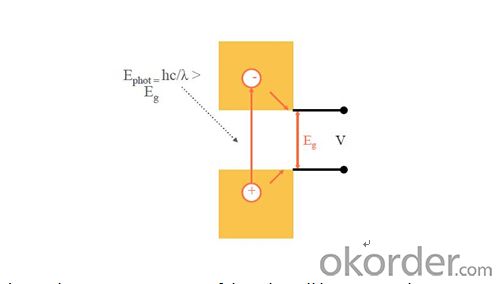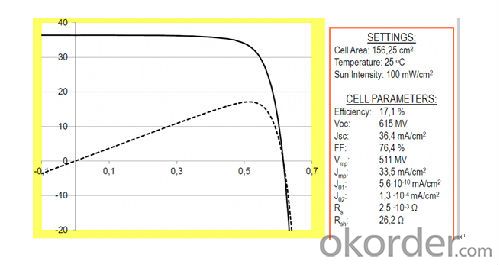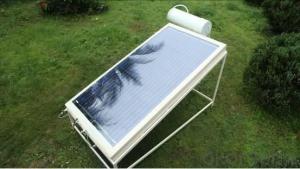Specifications
1.withstand high wind pressure and snow load.
2.with IEC61215/61730, TUV, CE, ISO
3.high conversion efficiency
| ITEM NO. | NBJ-180 M | |
| Maximum Power (W) | 180 | |
| Optimum Power Voltage (V mp) | 36.9 | |
| Optimum Operating Current (I mp): | 4.88 | |
| Open Circuit Voltage (Voc) | 44.3 | |
| Short Circuit Current (ISC) | 5.22 | |
| Cell Efficiency (%) | 16.50% | |
| Module Efficiency (%) | 14.10% | |
| FF (%) | 70-76% | |
| Warranty | 90% of 10 years, 80% of 25 years. | |
| Standard Test Conditions | AM1.5 1000W/m2 25 +/-2°C | |
| Bypass Diode Rating (A) | 12 | |
| Cable & Connector Type | Pass the TUV Certificate | |
| Brand Name of Solar Cells | ----Cell | |
| Size of Module (mm) | 1580*808*35 | |
| Solar Cell | 125*125 Mono | |
| Backing (Material) | TPT | |
| Frame (Material Corners, etc.) | Aluminum-alloy | |
| Number of Cell (PCS) | 6*12 | |
| N/W(KG) | 15.5 | |
| Junction Box Type | Pass the TUV Certificate | |
| Tolerance Wattage (e.g. + /-5%) | ±3% | |
| Front Glass Thickness (mm) | 3.2 | |
| Surface Maximum Load Capacity | 5400Pa | |
| Allowable Hail Load | 23m/s, 7.53g | |
| Packing | 1*20' GP | 276pcs |
| 1*40' GP | 644pcs | |
| Temperature Coefficients of ISC(%)°C: | 0.04 | |
| Temperature Coefficients of Voc(%)°C: | -0.38 | |
| Temperature Coefficients of Pm(%)°C: | -0.47 | |
| Temperature Coefficients of IM(%)°C: | 0.04 | |
| Temperature Coefficients of VM(%)°C: | -0.38 | |
| Temperature Range | -40°C to +85°C | |
TUV, IEC, CE Certified photovoltaic /pv solar energy panel
Description:
1.high conversion efficiency
2.sealed with high transparency low-iron tempered glass, anti-aging EVA, high insulation TPT.
3.withstand high wind pressure and snow load.
4.with IEC61215/61730, TUV, CE, ISO
Warranty:
1) 5 years for material & workmanship;
2) 12 years for 90% power output;
3) 25 years for 80% power output.
* MOQ: 50pcs
* Delivery Time: 10-20 days after order confirmation
* Package: Wooden carton or pallet packing
Photovoltaic energy conversion is the key to electricity generation by solar panels. This takes place when photons with sufficient energy excite charge carriers to higher energy levels. The built-in asymmetry of the solar cells separates the carriers both in space and energy. The number of charge carriers collected at the external terminals determines the net current produced by the solar cell. The energy differences maintained between the charge carriers when extracted at the external terminals is converted to electrical voltage. The photovoltaic process is shown below:

As listed above, the power generation of the solar cell happens in three stepsâ”photo generation of charge carriers, separation of charge carriers, and transport of the charge carriers from the point of generation to the external electrical connectionsâ”and all three steps must be performed well to produce an efficient solar cell.
The efficiency of a solar cell is defined as the ratio between the output of electrical power and the available power of the light falling onto the module. More commonly, this is referred to as the conversion efficiency of the solar cell. This is measured under a well-defined set of standard testing conditions. The reason for this standardised testing is that efficiency is a key metric for the solar industry, and that both producers and researchers need to be able to compare efficiencies obtained using different technologies. Modules are traded on efficiency ($/kWh), not number of units. The efficiency of a module depends heavily on the quality of the material used in manufacturing, which means it may make economic sense to invest more in materials and processes higher in the value chain if they significantly increase efficiency. Below typical solar cell characteristics are shown:

Solar cells convert light energy into electrical energy either indirectly by first converting it into heat, or through a direct process known as the photovoltaic effect. The most common types of solar cells are based on the photovoltaic effect, which occurs when light falling on a two-layer semiconductor material produces a potential difference, or voltage, between the two layers. The voltage produced in the cell is capable of driving a current through an external electrical circuit that can be utilized to power electrical devices. This tutorial explores the basic concepts behind solar cell operation.




























